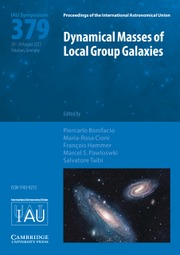Article contents
Final Fates of Massive Stars
Published online by Cambridge University Press: 05 September 2012
Abstract
Massive stars are thought to play important roles in the early evolution of the Universe. In this paper, we first classify the final fates of massive stars into 7 cases according to their mass ranges. These variations of the final fate may correspond to the observed large diversities of supernova properties, such as extremely faint and extremely luminous (superluminous) supernovae, and the extremely energetic hypernovae. We then focus on the properties of the peculiar superluminous Type Ic supernova 1999as. We examine radioactive decay models, magnetar models, and circumstellar interaction models for the light curve of SN 1999as. We find that these models are not quite successful, and thus it is crucially important to improve these models to clarify the final fates of massive stars.
Information
- Type
- Contributed Papers
- Information
- Copyright
- Copyright © International Astronomical Union 2012
References
- 1
- Cited by

